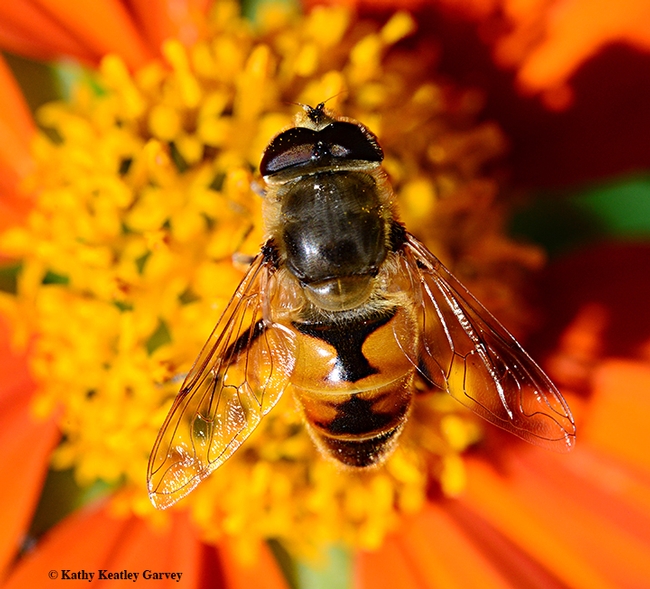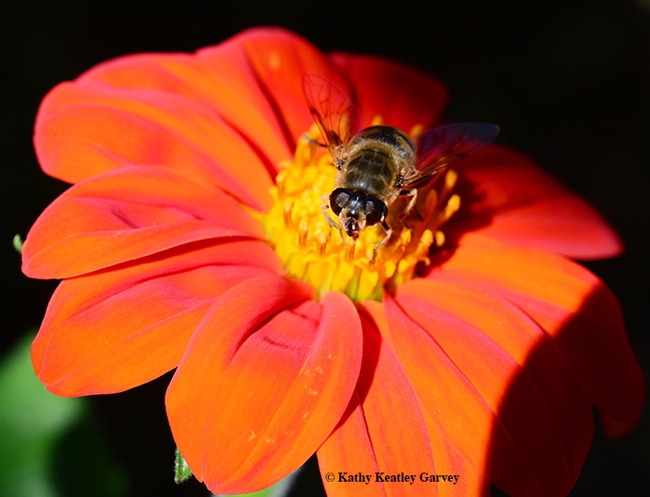- Author: Kathy Keatley Garvey
They can't drain your bank account. They can't open up new credit cards. They can't get medical treatment on your health insurance.
But they are identity thieves, nonetheless.
Meet the drone fly (Eristalis tenax), often mistaken for a honey bee.
Indeed, it's about the size of a honey bee. In its adult form, it's a pollinator, just like the honey bee.
Unlike a honey bee, however, the drone fly "hovers" over a flower before landing. And unlike a honey bee, the drone fly has one set of wings, large eyes, stubby antennae, and a distinguishing "H" on its abdomen. Robbin Thorp, UC Davis distinguished emeritus professor of entomology, jokingly calls the drone fly "The H Bee."
Drone fly larvae are known as rattailed maggots. They feed off bacteria in drainage ditches, manure or cess pools, sewers and the like.
The fly belongs to the family Syrphidae (which includes insects commonly known as syrphids, flower flies, and hover flies) in the order, Diptera. The honey bee is Apis mellifera, family Apidae, order Hymenoptera.
One's a fly. One's a bee.
Lately we've been seeing scores of drone flies nectaring on our Mexican sunflower (Tithonia).
Identify thievery does have its advantages. Wary people and predators often shy away from drone flies, thinking they are honey bees and might sting them.
Drone flies can't sting. They can't drain your bank, either.






Also, my husband was a USDA purchasing specialist for bee study projects at UC Davis.
Love bees!